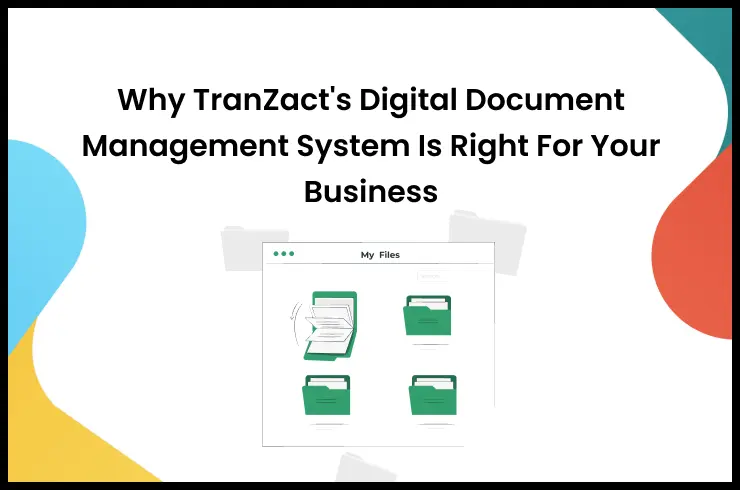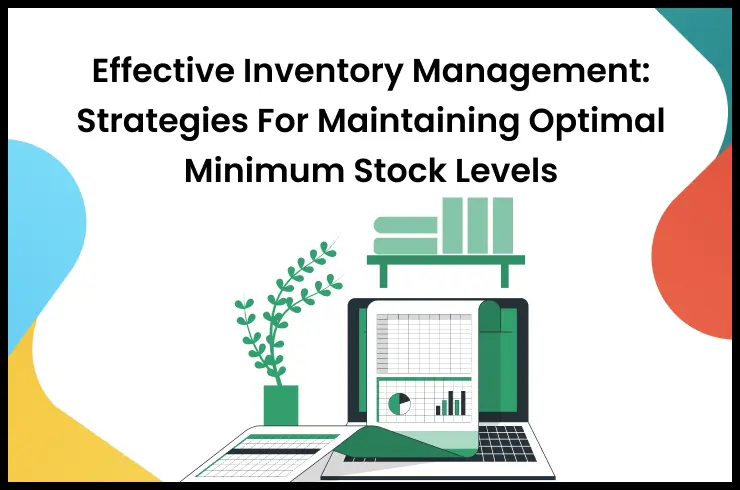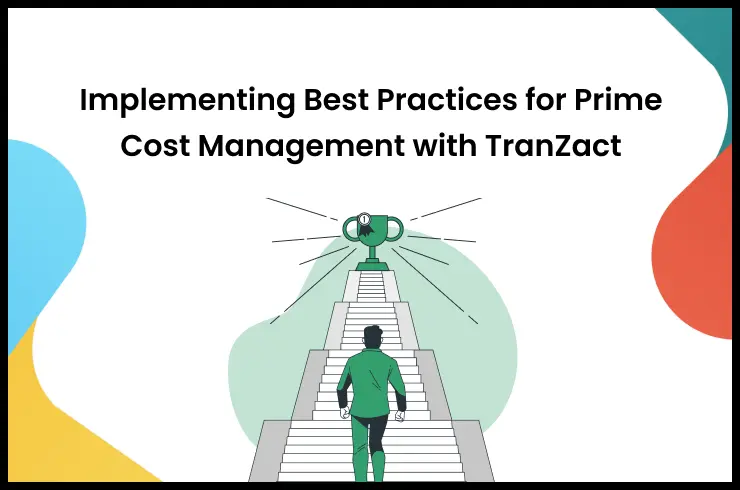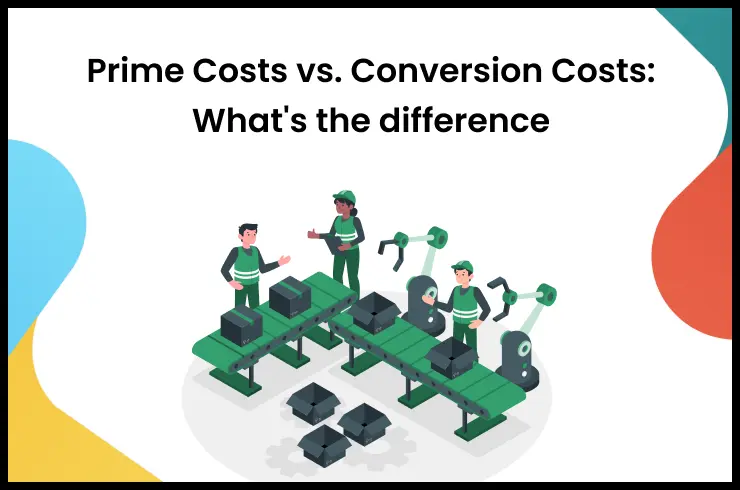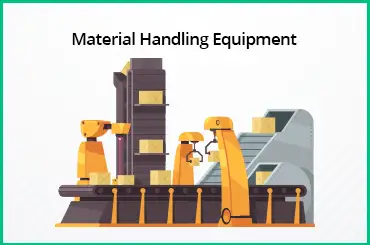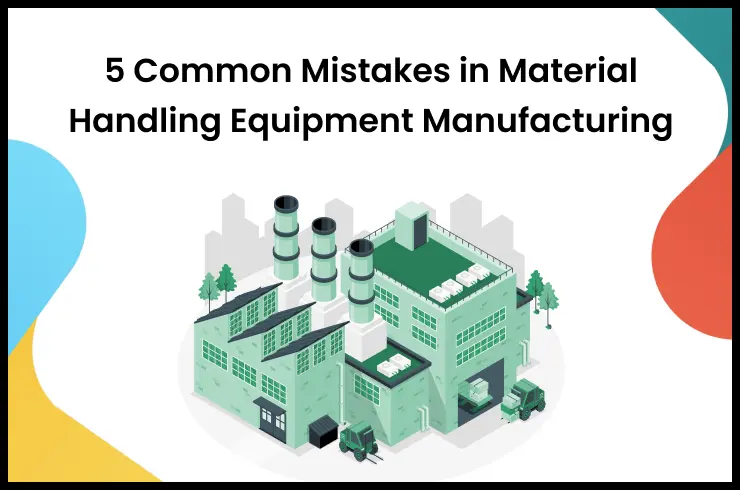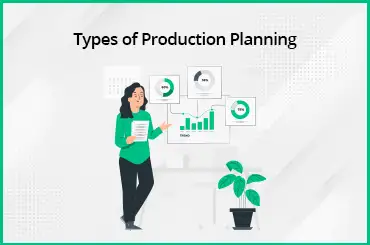Production planning is a crucial element of any manufacturing or production-based business, as it helps to ensure that good quality products are produced on time as per customer expectations.
By collecting relevant inputs from various departments, production managers are required to develop efficient production plans and ensure that these plans are always complied with at all stages. Whether you are a SME business owner or a manager at a larger manufacturing facility, understanding the basics of production planning will significantly contribute to the operational efficiency and profitability of your business.
So, let's dive in and explore the different types of production planning, best practices for implementing an effective production plan and common mistakes to avoid while preparing a production plan.
What Is Production Planning?
Production planning is a systematic production strategy followed by a business to ensure all production activities are followed accurately, for a particular product or service to be delivered to the end customer on time. It is a series of activities and techniques to guarantee optimum product quality and profit maximization for the business.
The primary objective of production planning is to ensure products or services are being developed and sold in the most efficient way possible, for business growth. Effective production planning will involve creating an in-depth program that details out the estimated demand for a product and the resources required to meet that demand.
It also consists of the methods involved in converting the resources available into finished goods. Thinking through your production plan and strategy will create more efficient business processes while ensuring your customers are never disappointed.
The Importance of Production Planning
While production planning and control is important for any business, it plays a particularly key role for manufacturing businesses. Effective production plans can help you gain a competitive edge, especially in the Indian market.
The Indian manufacturing industry faces unique challenges like supply chain disruptions and a high degree of volatility. These issues can have a devastating effect on your company's bottom line if they are not well anticipated and addressed in time.
By maximizing the use of your resources, increasing efficiency, decreasing waste, and raising customer satisfaction, prudent production planning can mean the difference between success and failure for your business.
It can also help to improve delivery times and enhance production capacity, allowing businesses to meet growing demand competitively. Additionally, well-organized production planning helps to identify potential bottlenecks in production operations. This leads to more streamlined business activities.
The Production Planning Process
Successful production planning takes into account various aspects of the business such as procurement, inventory, accounting, material and resources as well as sales functions. Each of these verticals has a key role to play in getting the final product into the hands of your customers. After successfully gathering the inputs you need from your teams, you will be ready to create an effective production plan.
To kick things off, you need to have a sufficient understanding of the level of demand to expect for your product. This ensures you create a realistic production schedule with a clear end goal, and know exactly how much quantity you need to produce to satisfy your customers.
The production schedule is a blueprint for your production plan. It outlines the various steps that need to be taken and the order in which these should be completed. A production schedule includes tentative timelines for each step and gives your plan the basic structure it needs. The final step of the production planning process is constant monitoring and evaluation.
Once you put your plan into action, you need to be vigilant and track the progress you are making. Keeping an eye on the gap between expected production and actual production will help you figure out what's working and which parts still need to be tweaked.
Types of Production Planning
There are various types of production planning based on diverse production planning techniques that you can employ to meet the production needs of your business. It is important to evaluate your options and choose one or a combination of many that will give you the competitive edge.
The Flow Method
This method of production planning assumes that there will be a certain continuity to your production. When you can accurately estimate ongoing demand, you can use the flow method to manufacture continuously and in large quantities. This method is very effective in saving costs and eliminating delays as it is based on anticipated and steady demand.
The Process Method
This type of production planning works best when products are manufactured using a specific process. In the process method, various task pieces work together in a previously defined sequence, completing their individual assignments to produce the final output.
The Mass Production Method
When a business needs to produce output in a defined flow and also ensure the products are identical, the mass production method is used. This type of production planning occurs when products are manufactured in large quantities using specialized machinery.
The Job Method
If your business needs to produce at a relatively smaller scale, you can consider opting for the job method of production planning. It entails treating each order as a separate job and it often means each order is customized to meet specific customer demands.
The Batch Method
If your business needs to produce a fixed quantity but not necessarily produce them one at a time, consider the batch method of production planning. This method is useful when output is produced in fixed batches and each batch is geared to meet customer demand for a particular time period.
Before you decide on the right type for you, evaluate each one closely to understand the potential benefits and shortfalls of each method.
What Is a Production Plan?
A production plan is a thoughtfully crafted document outlining the approach and strategy that a business will adopt in order to produce specific goods as per customer demand. It helps to think of a production plan as the blueprint for your entire production process, highlighting all the key functions required for your production cycles.
This document will help you create a structure for achieving a desired level of output, within a predetermined amount of time and at the highest possible quality and productivity.
It includes all inputs about the resources and equipment needed, along with the production schedule. It also outlines when products will be produced and the timeline when they will be ready for delivery to customers. In essence, it plays a key role to help your business improve its core production efficiency.
How to Make a Production Plan?
Making a production plan may seem like a daunting task at first, but it doesn't have to be difficult. Breaking the production planning process down into smaller steps helps you create a feasible plan of action for your business.
The key steps involved in the production planning process are:
Step 1 - Forecasting the upcoming demand
The first step is trying to accurately forecast future demand. This can be achieved by analyzing your past sales data, looking at the overall market trends and gathering customer feedback.
Step 2 - Potential methods of production
Once you have a sense of what customers want, when they want it, and how much quantity is demanded, you can look at the various options available to you for producing it.
Step 3 - Identifying a production schedule
Creating a schedule for your chosen method of production gives an overall structure to your production plan. This step includes determining the sequence of production operations, the expected start date and the expected completion date.
Step 4 - Allocating your resources
Your next step would be to decide how the available resources will be allocated within your schedule. At this point, you will need to determine the necessary raw materials, the amount of labor, and the equipment required to achieve the desired level of production. This is an important step for effective production planning and scheduling.
Step 5 - Evaluating and adjusting
Once your production plan comes into play, you need to monitor it constantly and track its performance. This can be done by comparing actual performance to the expected performance, as per the production schedule, and taking whatever corrective action is necessary.
Following these basic steps can help simplify the entire production planning process, making it more manageable.
If you are a small and medium enterprise business owner looking to streamline your production plans, look no further than TranZact. It's a cloud-based tool built specifically for Indian SMEs. TranZact helps you automate your entire production planning process, saving you precious time and resources.
Common Production planning mistakes
Tools like TranZact can make your life much easier when conducting production planning for your business. Given the complexity of the process, however, there are certain issues that can crop up.
Here are some common errors to watch out for:
Malfunctioning or breakdown of equipment:
Your production schedule is meant to streamline your production process. It relies on the basic assumption that all your equipment will function as expected, but that's not always the case.
When you face equipment failure, your schedule will be adversely affected and this can lead to unwanted delays. The best way to avoid this is by scheduling regular maintenance and having a backup plan ready for times when the system fails on many fronts.
Inaccurate estimation
Production planning involves a lot of moving pieces as the manufacturing business can be quite dynamic. A common mistake in this process is incorrect estimation of various functions and timelines during the production plan stage. With a lot of interdependencies at play, the margin for error is often underestimated.
You need to be attentive and agile as you navigate your way through the entire process, expecting the unexpected at every turn.
Avoiding on-ground visits
Frequent visits to the production floor will give you a clear insight into all ongoing activities and pending tasks. These in-person interactions will help you identify any gaps in the workflow and allow you to make the necessary adjustments to your production plans.
Software solutions such as TranZact are a great way to keep up with the progress of your production plans and stay updated even when you're away from the on-site factory.
Production Planning Best Practices
Give your business the best chance at success by following these production planning best practices:
Predicting customer demand
To understand the potential demand for your product, you need to understand your customer well. Adopt a production planning software in order to carry out market research and analyze your historic sales data effectively.
Study all the macro and micro trends that may affect your customer's choices and speak to your customers directly. The due diligence you do here will ensure your production plans are fruitful.
Accurate capacity planning
By looking at your production schedule and the availability of resources, you can assess the production capacity of your operation. Doing this will help you identify upcoming bottlenecks and take proactive actions necessary to mitigate the same.
Using production planning tools
One of the best ways to improve your efficiency and reduce overall costs is to automate your production planning. You can achieve this by using software such as TranZact that are built specifically for your manufacturing business.
Use these tools to get real-time updates, estimate aggregate production planning and gain a bird's eye view of your entire production process.
Forget Production Planning Worries When You Have TranZact
While basic manual tools can help you create a broad outline for your production plan, there are many limitations to using it for your entire production planning process.
TranZact's production planning software integrates your production module with inventory, material requirements planning and procurement. It is designed to improve your production strategy, by automating it from end to end.
It offers key functions of production planning such as finished goods testing, multilevel bill of material and centralized production dashboard to help you oversee all your production activities effortlessly. Thereby, it enables you to maximize profits and increase customer satisfaction.
FAQs on Production Planning
1. What is production scheduling?
Production scheduling is the process of planning, coordinating, and regulating the production of goods or services. It involves mapping out the set of tasks that need to be completed, deciding on the sequence of those tasks, and assigning timelines to each.
Manufacturing businesses create a production schedule to streamline their operations and achieve maximum efficiency in their production planning.
2. What is the main purpose of production planning?
Production planning is carried out to ensure a business aligns its production activities with the expected market demand, in the most efficient way possible.
Lowering costs, enhancing efficiency and delivering consistent customer satisfaction are the main goals of effective production planning.
3. What is the difference between production planning and production control?
When a business creates a strategy for the production of goods or services, it is known as production planning. Predicting customer demand, identifying the required resources, planning the production operations and constant monitoring to make necessary adjustments to the production schedule are all a part of production planning.
Contrarily, production control is the process deploying measures to closely monitor the production line to make sure it is operating effectively and on schedule. Production control keeps a tab on the progress of output, recognises and fixes any production problems that crop up and modifies the production schedule, as necessary.
4. What are the benefits of production planning?
Production planning enables your business to optimize its resources, schedule the various tasks required for production and manage inventory efficiently.
When production planning is done well, it helps your business predict customer demand accurately and deliver the goods or services at the right time. This leads to consistent customer satisfaction and builds trust and loyalty, resulting in an increase in overall revenue for your business.
5. What is a production cycle?
A production cycle refers to the order of tasks that occur from the time a production process begins to the time it is completed. It also comprises monitoring the product delivery to the end customer. The main steps of a production cycle are:
- Planning: This is where customer demand is estimated, the necessary resources are allocated and the production schedule is created.
- Procurement: This step includes purchasing the raw materials necessary and obtaining any other resources needed for your production activities.
- Manufacturing: Once your raw materials are in place, your actual production can begin. Assembling, inspection, and testing are the key steps within the manufacturing process.
- Storage and distribution: Your finished goods can be kept in storage awaiting dispatch until it is time to send them to your customers.







